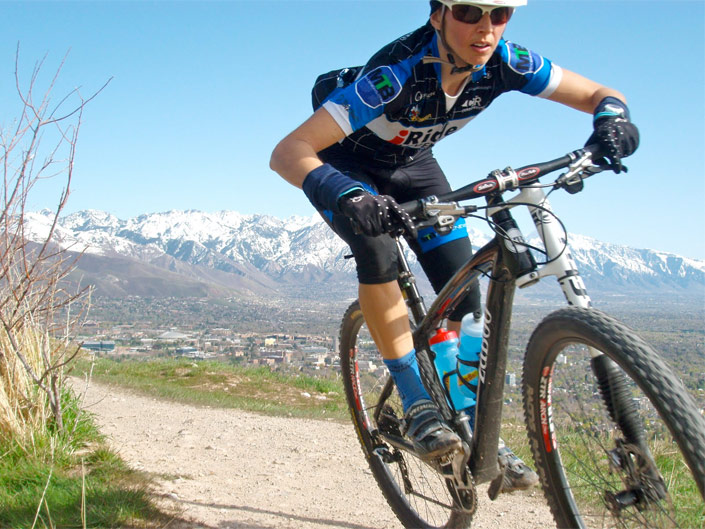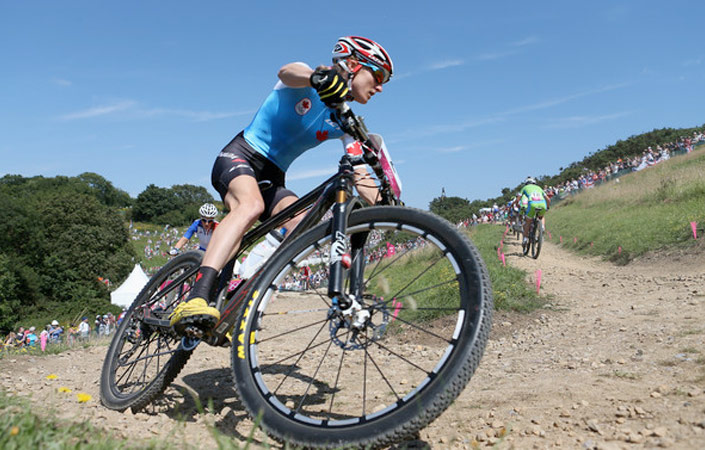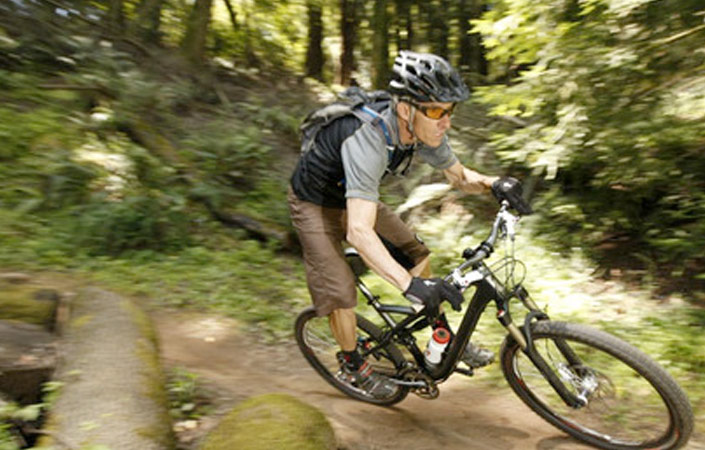
The brakes on your mountain bike perform a very simple task - they slow you down and eventually bring you to a stop. But you can learn to use your brakes in other cool ways. The brakes on your bike have huge potential, both in their performance and in their ability to boost your performance. In fact, slowing you down is just the tip of the iceberg.
THE BRAKING PART
Your mountain bike brakes are quite capable of slowing you down as well as causing you to crash. The best way to apply your brakes is to squeeze both levers evenly. This reduces the chances of causing one wheel to lose traction and ultimately slide out from under you. As your comfort with this method grows you can then become more front wheel biased. To do this, squeeze both brakes evenly, and then your front brake ever slightly more. As your weight transfers forward under heavy braking, your traction on the front wheel increases. The traction on the back wheel greatly decreases due to your weight transfer.
Cars come tuned with a front brake bias. Try replicating this on your bike for more effective braking. The key to super-efficient braking is to avoid loss of traction at all costs. Once you hear or feel one wheel skidding, release pressure on that brake lever until the skidding stops.
DID YOU KNOW? Applying front or rear brakes in a corner has vastly different results. The front brake shifts body weight forward, loading up the front tire and increasing grip. It also tends to dip the bike into the corner allowing you to muscle in for a sharper turn. The rear brake does the opposite. Applying rear while cornering tends to straighten the direction of travel - this should really be avoided as it will force you off line and into the bush!
GETTING TECHNICAL
Once you've learnt the basics you can really ramp up your riding flare. Some of these points have no real purpose, other than to just have fun and perhaps increase your confidence. Here's a rundown of some cool braking tricks:
HARD BRAKING

Leaving your braking til the last moment increases your riding speed, but also leaves less room for error. It's important you get it right, and the best way to learn is to make your braking distance shorter and shorter until you overshoot.
- Approach corner with speed.
- Delay braking by a metre or so.
- Brake hard, with a bias of 70%/30% front/rear.
- While braking, lean back as far as you can, with your butt over the rear wheel.
- Release braking as you enter corner.
- Hope for the best!
The reason you release the brakes before you enter the corner, is that you can't turn under such harsh braking. You'll just slide out and continue off into the bush. The other reason for releasing before you turn is that it allows your bike to straighten out before changing direction - your back wheel might be slightly to the side, going the opposite direction to the corner.
Related article: 5 Basic mountain bike skills every beginner should learn
CORNER WHIP
More flare than function, a corner whip (different names in different riding circles) is pretty fun. Function? Probably not! A corner whip is merely a matter of flicking your back wheel to the SAME SIDE as the direction of the corner. If the corner turns left, then flick your wheel to the left. Once the wheel hits the ground, it accentuates the severity of your turn, giving you a sharper turn.
- Approach corner with speed.
- Approach corner with considerable speed.
- Brake 70% / 30% front and rear.
- Release both brakes, while lifting your back wheel at the exact same time (clipless pedals needed).
- Try flick the rear wheel to the SAME side you're turning.
- As the wheel hits the ground, your bike will be in a turning position (handlebars turned, front wheel headed into corner).
- Allow the bike to turn sharply, which it will do due to it's positioning in the air.
Using this technique is more effective when entering a berm, as the berm prevents you from shooting off the trail. It's more fun than anything else, and usually results in cloud of dust as your rear wheel hits the ground.
CORNERS WITH BERMS
A corner with a banked or manmade 'berm' is designed for maximum cornering speed. In fact, the larger the berm, the more speed you can carry. When you enter a bermed corner, you're best carrying as much speed as possible. Try these tips for very effective cornering.
- Approach corner with speed.
- Approach corner with speed.
- Brake as required, using any technique mentioned.
- Reduce speed to required amount, before you enter the corner.
- Release brakes completely BEFORE you enter the corner.
- Corner with no brakes at all, and use the lower portion of the berm. Compress yourself and the bike into the berm itself.
- As you exit corner, push bike away from you to 'pop' out of the berm with free speed.
SLOW AND TIGHT

Corners aren't all about speed and wheel flicks. Some corners are so tight that you can barely make the turn - especially on today's 29inch bikes. But there is a way to help you make the tight turns easier. Brake use!
- As you enter a tight corner (not uphill), set yourself up and choose your line.
- Begin turning the front wheel, and at the tightest point of the corner, apply the rear brake slightly.
Doing this allows the back wheel to act as an anchor, and as a fixed pivot point to get you around tight corners. It's only effective at slower speeds. Doing it at speed will actually cause the rear wheel to slide, and send you bushwards. As mentioned previously using the front brake here will dip the bike lower into the corner but be careful - front brakes and sharp corners can result in a front wheel wash out and you sprawled across the trail!

TIP: When performing any fancy braking tricks, try to avoid locking your wheels. You know those severe braking bumps before a corner? That's thanks to countless trail destroyers before you, sliding into corners with wheels locked. It does nothing but ruin a trail you probably didn't build. Ride with skill and finesse, but not butchery.
Have fun, and learn to brake smoothly and with control before you try anything fancy. Effective braking will allow you to maintain more speed and have more control over your bike!


